| ~ Hall of Heroes ~ HMS Glowworm
All info and photos from this website. |
   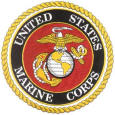  |
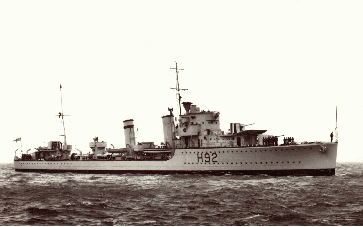 |
HMS Glowworm, (H92) a 'G' class destroyer was launched on 22nd July 1935. She weighed 1,345 tons. She was armed with four 4.7 inch guns; seven anti-aircraft/machine guns; ten 21 inch torpedo tubes and depth charges. She cost £300,000 to build and had a complement of 145.
(Picture: Glowworm in 1936) |
Her first peacetime duties were in the Mediterranean which included escort work at the time of the Spanish Civil War and the Munich Crisis. It seemed that Glowworm was developing a habit of colliding with things in an uncanny similarity to her destiny, after she hit HMS Grenade, her sister ship, in May 1939, whilst on night exercises and the Swedish Ship Rex in February 1940. Both collisions resulting in her undertaking extensive damage repair.
(Picture: Glowworm at Alexandria after colliding with Grenade in May 1939. Note the extensive damage.) |
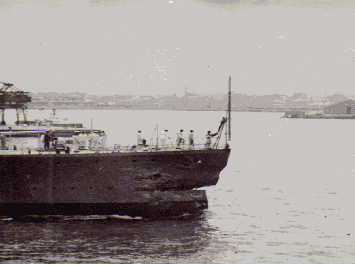 |
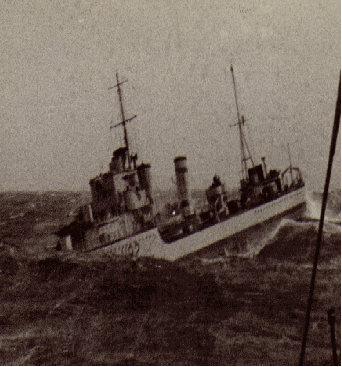 |
On 22nd July 1938 Lieutenant Commander Gerard Broadmead Roope was appointed in command of Glowworm. A competent career naval officer, well liked and respected by his men. His ship's company called him 'Old Ardover', for his habit of altering course at a moment's notice and 'Rammer Roope' as a result of the events described above. At the Outbreak of World War Two, Glowworm was based at Harwich. On 5th April 1940 She left for the stormy waters of Norway as one of the escorts for the Battle Cruiser Renown, dispatched to intercept the expected German invasion force.
(Picture: Glowworm in heavy seas) |
|
| On 6th April whilst screening a minelaying operation (Operation Wilfrid) off the coast of Norway, Glowworm, in heavy weather conditions, lost a man overboard. After seeking permission from the Renown, Lt Cdr Roope turned her around to look for him. After spending the day fruitlessly searching they gave up and attempted to rejoin the group. On the morning of 8th April Glowworm, still on her own, sighted a destroyer who when challenged, initially identified itself as Swedish. The destroyer was in fact German: Bernd Von Arnim, which began firing. The Glowworm promptly returned fire. Another German destroyer soon appeared: Paul Jakobi. Glowworm's fight against the odds had begun. Picture: destroyer in the distance: Glowworm as photographed from the Hipper. |
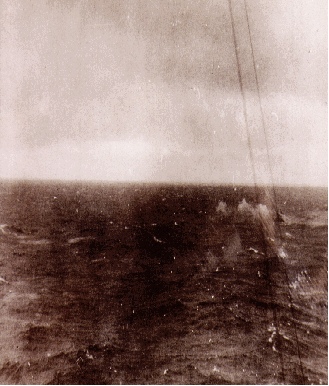 |
|
 |
In the ensuing exchange Bernd Von Arnim, packed with invasion troops and Paul Jakobi, both turned and fled into a rain squall. Lt Cdr Roope guessed that they were trying to lead him on to their main force, but gave chase in an attempt to find the main German Invasion fleet, so he could report their position to the Admiralty. After emerging on the other side of the squall, Glowworm came face to face with the 10,000 ton German Heavy Cruiser Admiral Von Hipper, armed with eight 8 inch and twelve 4 inch guns.
Picture (above) The Heavy Cruiser Admiral Von Hipper |
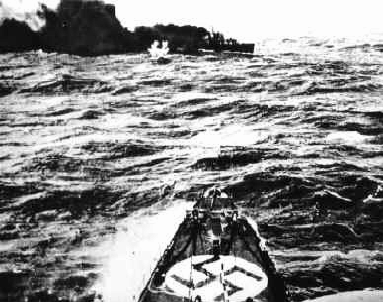 |
Roope immediately ordered that the Glowworm make smoke and for an enemy sighting signal to be sent. Using the cover of her smoke screen the Glowworm made two torpedo attacks. Firing a total of ten torpedoes. One missed the Hipper by yards but none found their mark. All this time Glowworm was taking crippling hits from the Hipper's big guns. Lt Cdr Roope then ordered a sharp turn to starboard and headed straight for the Hipper giving the famous order "Stand by to ram". |
|
The Hipper, realising too late what was happening tried to turn and ram the Glowworm but was much too slow. Glowworm, all guns firing and siren wailing like a banshee, tore into the Hipper's starboard side. Striking her amidships, She tore away 100 feet of Hipper's armoured plating, damaging the starboard side torpedo tubes, killing one man at his gun and puncturing two fresh water tanks.
Picture: (left) Glowworm on fire but still fighting |
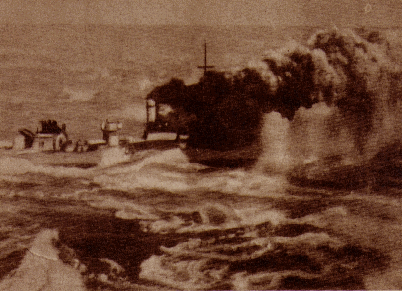 |
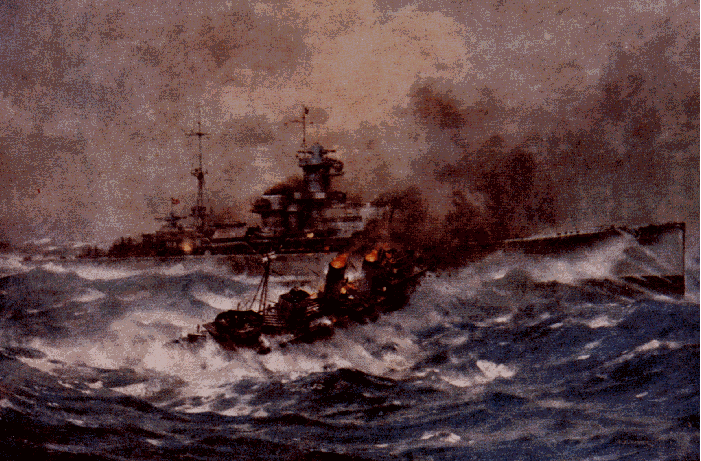
After ramming the Hipper, Glowworm drew clear. Although her decks were swept by a storm of fire from Hipper's 4.1 inch and close range weapons, she still managed to get off another salvo hitting Hipper at a range of 400 yards. The salvo came from the only gun on Glowworm still firing, commanded by Petty Officer Walter Scott. She was by then starting to sink. Her bows wrecked, a major fire raging amidships and all steam pressure lost, Roope gave the order to abandon ship.
Picture: (above) Admiralty Artists Impression of Glowworm ramming the Hipper. |
 |
Lt Cdr Roope was seen on her keel talking to a Petty Officer, Townsend, about the fact that they wouldn't play cricket for a while again. He then went to open the sea cocks to sink her. As the Glowworm went down, men climbed onto her bow or dived into the stormy, freezing, oil covered water. As she slipped under, her siren which had been going all through the action, abruptly stopped causing a momentary eerie silence. Until her depth charges blew up, killing yet more men. The Captain of the Hipper, Helmuth Heye, chivalrously stayed for over an hour picking up survivors.
Picture: (left) Glowworm sinking as seen through Hipper's gun sights |
|
| Heye positioned Hipper so that the current in the sea would bring the drifting survivors to him. All the personnel on deck, including the soldiers, helped to pull in the exhausted, oil covered survivors. Many grabbed ropes but were too exhausted to hold on to them and slipped to their deaths. Lt Cdr Roope was in the water helping his men to the ropes and to get life jackets on. Finally he took hold of a rope himself and was pulled some distance up the side. But with a combination of the huge waves and his exhaustion, he let go and slipped beneath the waves. Out of a total crew of 149, only 31 survived. The only officer was Torpedo Control officer Lt. Robert Ramsey. The Germans congratulated the survivors on a good fight and treated them as equals. Captain Heye told the survivors that their Captain was a very brave man. Later Heye sent a message through the International Red cross, recommending Lt Cdr Roope for the Victoria Cross. The only time in British History that the VC was recommended by the enemy. |
|
The Survivors spent the rest of the war as POWs. It was only after the war when they returned and Lt Ramsey told the story, that the events of that fateful day in April 1940 came to light. As a result of the gallant action Lt Cdr Roope was awarded the Victoria Cross; Lt Ramsey the Distinguished Service Order; and three other ratings got the Conspicuous Gallantry Medal; Engine Room Artificer Henry Gregg; Petty Officer Walter Scott and Able Seaman Reginald Merritt.
|
| Please remember the Canteen is here to honor, support and entertain our troops and their families. This is a politics-free zone! Thanks for helping us in our mission! And thanks, Biglook, for the heads up on this hero! |
|
